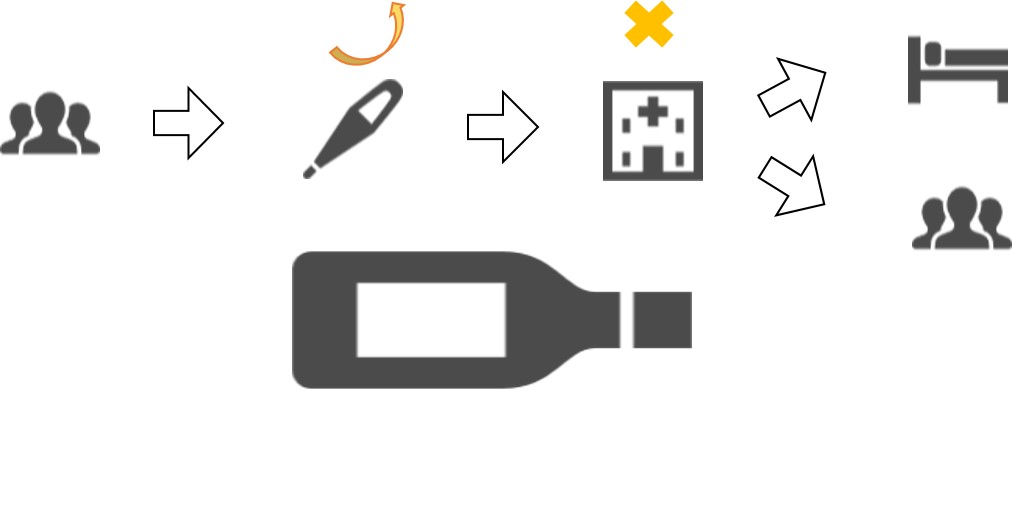We anticipated the increase in the number of patients in the holiday season in May, however with our effort, we could control and the number was decreased. (the link of the recent number and graph ) Unfortunately, around 900 people passed away with this virus, however when we compare it with major developed countries. the number is dramatically small, for example, 1 % of the US and 3 % of Italy. Now the number of patients is increasing in developing countries, therefore I want to share our experience and my thought again with you.
I analyzed the reason why the number is so small compared with western countries and find one factor.
Systems approach
Some of you might remember Kaizen and 5S . Those are Japanese operation management methods. We naturally adapt them for the medical management for this epidemic. We focus on the total efficiency of the process, not local efficiency.

The above picture illustrates the flow of patients. First, we analyzed which process is the “bottleneck” of the entire chain. We realized that the limited number of beds for the patients of this virus in hospitals was the bottleneck. Therefore we designed the total flow according to the capacity of the hospitals. We tested (PCR test) only the people who have severe symptoms. If we had increased the number of tests, the hospitals have overflowed and a large number of doctors and other medical staff also might be infected and hospitals had dysfunction. We actually saw this case in the US, Italy, and other western countries. If we can prepare more beds or have drugs of the treatment for this virus and can increase turn over the ratio of the beds, we will increase the number of the testing.
If you like, please consider taking the systems approach and firstly find which process is the bottleneck and design the entire flow to prevent overflow in the system.
